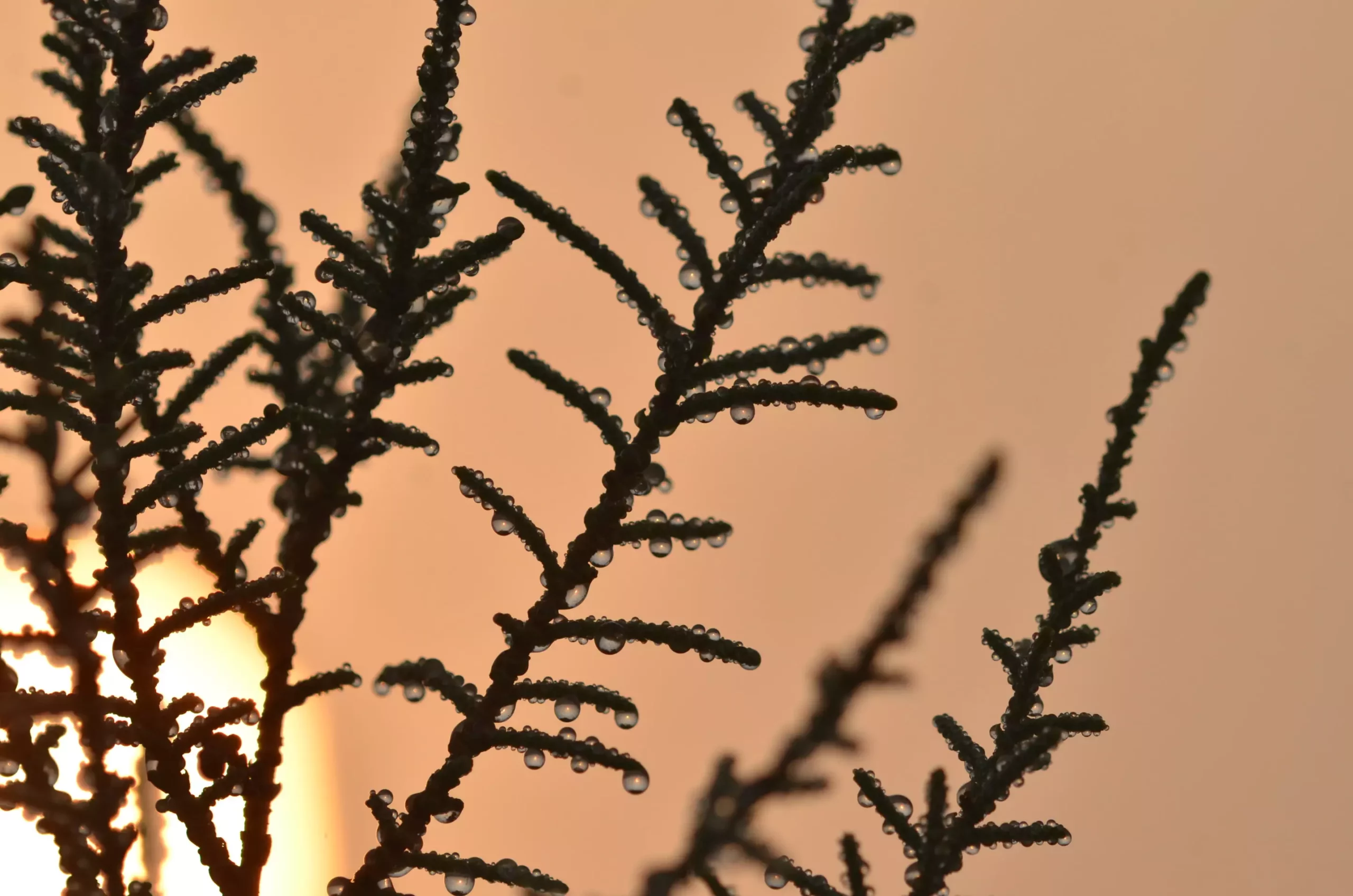In a groundbreaking study, a team of scientists led by Post-Doctoral Associate Marieh Al-Handawi and Professor of Chemistry Pance Naumov from NYU Abu Dhabi’s Smart Materials Lab and Center for Smart Engineering Materials (CSEM) has uncovered the unique mechanism employed by a desert plant to extract moisture from the unforgiving desert air. By excreting salts to condense water onto the surface of its leaves, Tamarix aphylla, also known as athel tamarisk, has evolved to survive in hypersaline conditions prevalent in the United Arab Emirates. This discovery not only holds promise for the development of new technologies but also has the potential to improve existing methods such as cloud seeding, offering a sustainable solution for harnessing atmospheric water resources.
Tamarix aphylla is a halophytic desert shrub with remarkable morphophysiological traits that enable it to thrive in arid environments. Many plants and animals in such regions have developed mechanisms to harness water sources like fog and dew. These mechanisms serve as inspiration for emerging water-collection technologies, which aim to maximize the efficiency of current methods for harvesting aerial humidity. The fundamental principles underlying natural water collection hold the key to developing innovative approaches in this field.
The research team, in their paper titled “Harvesting of Aerial Humidity with Natural Hygroscopic Salt Excretions,” published in the journal Proceedings of the National Academy of Sciences, explores the physicochemical aspects of salt release and water collection mechanisms in Tamarix aphylla. The plant absorbs saline water from the soil via its roots and filters out the salt. Concentrated salt solution is then released onto the outer surface of its leaves. As the salt solution undergoes evaporation, it transforms into a hygroscopic crystalline mixture comprising at least ten different minerals. Fascinatingly, some of these salt crystals possess the ability to attract moisture from the air, even at relatively low humidity levels of approximately 55% relative humidity. The condensed moisture then forms droplets on the plant’s leaves, facilitating absorption.
The discovery of Tamarix aphylla’s unique water collection mechanism has far-reaching implications. Not only does it unveil a complex and natural method for water utilization, but it also presents opportunities for the development of environmentally friendly solutions. Lead author Al-Handawi emphasizes, “Our findings not only reveal a unique, natural complex mechanism for water utilization, they also open prospects for designing environmentally benign formulations based on a biogenic salt mixture that could be used for efficient harvesting of aerial water or cloud seeding at low humidity.” This breakthrough could revolutionize cloud seeding practices, making them more effective and aligned with the responsible use of the planet’s scarce water resources.
Given the global scarcity of freshwater, research into alternative water-harvesting technologies has gained significant momentum. In water-stressed regions, supplementing traditional water resources with innovative methods is crucial. The natural water collection mechanism developed by the research team, utilizing environmentally benign salts as moisture adsorbents, offers a bioinspired approach that complements existing water collection and cloud-seeding technologies. By harnessing the power of nature, this breakthrough could potentially alleviate water stress in regions facing water scarcity.
The discovery of Tamarix aphylla’s water collection mechanism marks a significant milestone in the pursuit of sustainable solutions for water scarcity. By unraveling nature’s secrets, scientists are paving the way for a new era of water harvesting and cloud seeding technologies. The integration of environmentally friendly salt mixtures has the potential to optimize efficiency and revolutionize current practices. As research and development continue in this field, we can hope to see the emergence of advanced technologies that align with our responsibility to utilize water resources wisely.
The study conducted by NYU Abu Dhabi’s Smart Materials Lab and CSEM sheds light on the remarkable mechanism employed by Tamarix aphylla to extract moisture from the desert air. This discovery not only provides insights into the natural water collection abilities of arid region plants but also holds tremendous potential for the development of innovative technologies. By harnessing the power of nature, we can pave the way for sustainable solutions in water collection and cloud seeding. This groundbreaking research is a stepping stone towards addressing the global water scarcity crisis and fostering a future where water is no longer a limited resource.


Leave a Reply